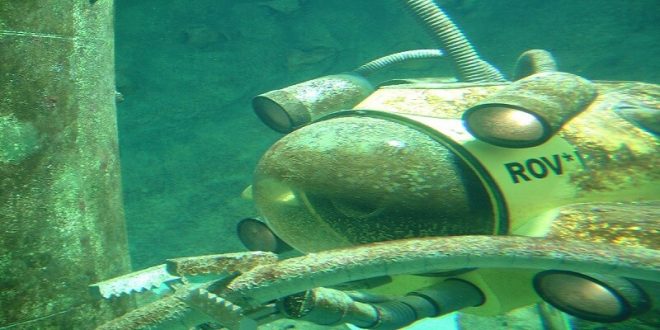With advances in robotics technology, underwater robots are becoming more and more commonplace. Underwater robots are becoming increasingly important in various fields and industries, from marine biology to oil and gas exploration. From submersibles used for ocean exploration to autonomous underwater vehicles for monitoring and surveying the ocean floor, these robots are revolutionizing how humans interact with the underwater world. The blog post will explore the rise of underwater robots and how they benefit society.
1. Shape-Shifting Undersea Robots
Shape-shifting robots are a growing field of Underwater Robotics research that is particularly exciting. These robots’ design allows them to move freely in all directions in the water, changing their shape and size. They can take on the form of a snake, a jellyfish, an octopus, or any other imaginable creature. The robots are ideal for navigating complex underwater environments, such as coral reefs and shipwrecks. They are agile and can move through tight spaces more efficiently than traditional underwater robots.
Additionally, they can change their shape to fit into narrow areas and then quickly expand to take on a larger size. Furthermore, these robots can help in search and rescue operations, monitoring pollution levels, or tracking fish populations. They can also help in exploring new areas difficult for humans to reach. With the ability to move freely in three dimensions and change their shape, these robots will open up entirely new possibilities for underwater exploration.
2. Smart Swimming Underwater Robots
These smart swimming underwater robots are revolutionizing how researchers and other professionals explore and study the ocean. They provide us with unprecedented access to this vast, mysterious world without ever having to step foot in it. By sending these robots into the ocean’s depths, we can learn about its history, monitor changing conditions and discover new species.
With further advances in technology, the possibilities for underwater exploration are endless. Biomimetic robots take things one step further – they mimic the behavior and movements of real aquatic creatures! In the past, most underwater robots could only move forward and backward at a pre-programmed speed.
However, these biomimetic robots, inspired by aquatic animals such as jellyfish, sharks, and whales, can maneuver like real animals in their environment. That means they have greater agility and mobility than their non-biomimetic counterparts – giving us much more comprehensive views of what is happening beneath the water’s surface.
3. The Race for Ever Deeper Water is On
With the rise of underwater robots, the race for ever deeper water exploration is not slowing. Underwater robots, or AUVs (Autonomous Underwater Vehicles), can explore and gather data in even the most extreme ocean depths. That means that scientists and engineers have access to data and insights from deep-sea environments that were previously inaccessible.
AUVs can be equipped with various sensors to gather environmental data, such as temperature, pH levels, and water pressure. The information can help better understand and monitor changes to the deep marine environment, allowing stakeholders to understand how human activities affect the ocean’s ecosystem.
The current generation of AUVs can travel down to depths of 6,000 meters (nearly 20,000 feet). The potential for AUV exploration is vast. With continued developments, it may one day become possible to explore areas of the deep ocean that humans have never seen before. And with each discovery comes a greater understanding of our world and its many mysteries.
4. More Powerful Energy Sources
Underwater robots require an energy source that can withstand the pressure of the deep sea environment while providing the robots with enough power to explore and complete their tasks. For many years, battery power was the primary energy source for underwater robots. That allowed for relatively short-term exploration as the batteries would eventually run out of charge. However, more advanced energy sources have enabled modern robots to stay submerged for extended periods.
One such energy source is fuel cells, which use chemical reactions to generate electricity. Fuel cells can generate more electricity than batteries and last much longer, allowing underwater robots to stay operational for extended periods. Other energy sources for underwater robots include solar cells, wave power, and kinetic energy harnessed from ocean currents.
Powerful energy sources enable underwater robots to explore and operate at great depths. By relying on more reliable and longer-lasting energy sources, these robots can explore much deeper than ever, helping scientists and researchers uncover previously inaccessible ocean mysteries.
5. New and Improved Sensors
Modern underwater robots with specialized sensors can detect hidden objects or find specific targets in deep-sea environments. These specialized sensors include sonar, magnetometers, and acoustic imaging systems. The sensors can detect objects in the water and sense changes in magnetic fields to identify metal objects beneath the surface. Acoustic imaging systems use sound waves to create an ocean floor image, allowing researchers to find new geological features or even uncover ancient ruins.
The ability of these sensors to map and record data is invaluable to scientists and researchers studying the ocean. They allow robots to explore regions humans cannot reach and provide information on ocean currents, temperatures, and other environmental factors necessary for understanding our planet’s changing climate. With new and improved sensors, underwater robots are helping researchers and engineers gain unprecedented insight into the oceans.
Conclusion
Underwater robots have become increasingly popular in recent years. The sophisticated machines can perform various tasks, from surveying the ocean floor to monitoring aquatic life. With advances in technology, underwater robots are becoming more and more powerful, allowing them to complete tasks more efficiently and accurately while mitigating risks.
 Free Web Resources , psd, mockups, & web templates Best WordPress Themes & Best Html Templates
Free Web Resources , psd, mockups, & web templates Best WordPress Themes & Best Html Templates








